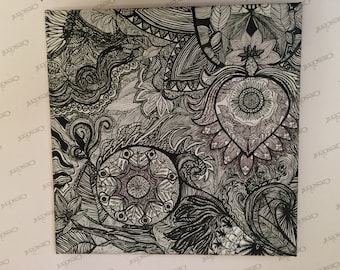
Other times, I really enjoyed the slow and spontaneity of the watercolor as a starting point, and then I would go in with a brush pen markers to add details, increase the contrast, and make the form a lot more three-dimensional.īrainstorming & Sketching a Character Design Dip Pen Drawing with Ink & Markers “Straight out of the tube” colors Sometimes I would start the piece with the brush pen markers, and then add passages with watercolor. See this technique demonstrated in our Watercolor Painting in Utah tutorial. My solution to this problem was to go back and forth between alcohol-based brush pens and watercolor in the same painting. One option to make the process a little bit easier to control, is to use several different color art media together.įor example, I always had trouble painting with watercolors for the longest time, using only watercolor by itself always felt very intimidating.
#WHITE INDIA INK FOR HIGHLIGHTS ON COLORED PENCIL DRAWINGS FULL#
Color is a great opportunity for mixed mediaĪ lot of color drawing media can take time to figure out and get a full understanding of. Some art media require mixing, while others require colors to be layered on top of each other.įor example, with painting media, you’ll need to mix your colors with a palette knife while in a drawing using soft pastels or crayons, you’ll create different color mixtures by layering the colors on top of each other. When creating color artworks, take great initiative to aggressively mix and layer your colors. Some options for color schemes are monochromatic artworks, a more subdued color palette, warm colors only, cool colors only, or a artwork that use highly intense, saturated colors. Determining a color scheme can be enormously useful, as you will have a plan for how you will approach your colors. Many students plunge into their artworks without considering a color scheme in advance. You can include some monochromatic artworks, some pieces that have a more subdued color palette, or a pieces that use highly intense, saturated colors. The color artworks you show in an art school portfolio should demonstrate that you can either layer or mix colors and get beyond painting with colors that come “straight out of the tube.”Įxperiment with a wide range of different color schemes.



Make sure that you have both black and white artworks as well as artworks that display a full range of color.īlack and white artworks are important so that you can demonstrate an understanding of a wide range of tones and value, and to explore contrast and lighting.


 0 kommentar(er)
0 kommentar(er)
